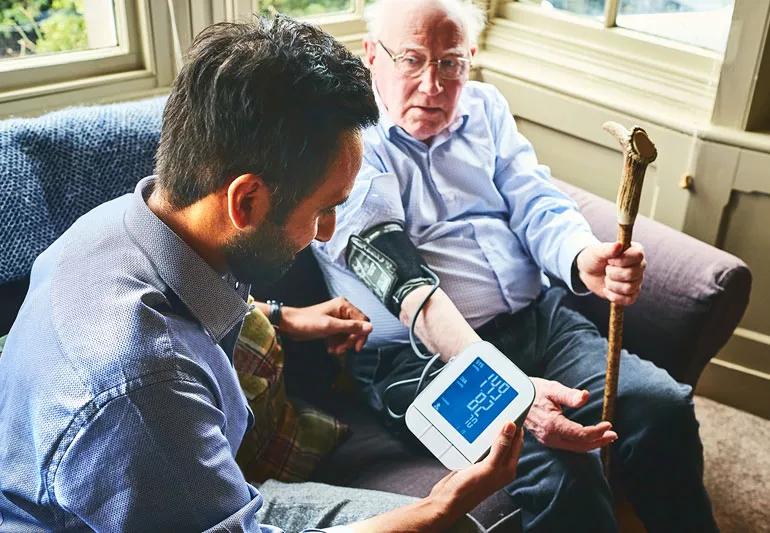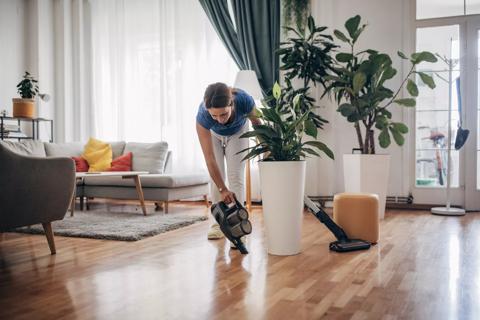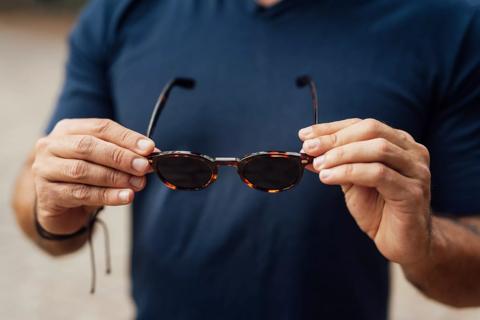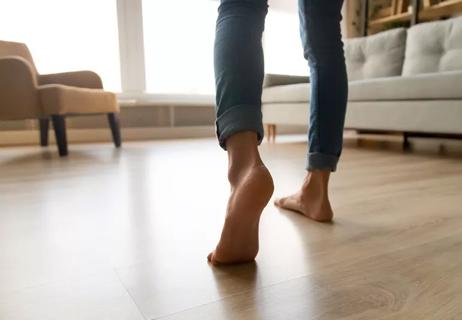Taking care of yourself helps you take care of your loved one

As is true with many medical conditions, the experience of diabetes-related macular edema (DME) varies from person to person. This means a one-size-fits-all approach to caregiving isn’t going to work.
Advertisement
Cleveland Clinic is a non-profit academic medical center. Advertising on our site helps support our mission. We do not endorse non-Cleveland Clinic products or services. Policy
But there is one single most important thing you can do as a caregiver: Try to understand and empathize with your loved one — and be open to adapting your approach to fit their changing needs. In other words, communication is key.
It’s important to help your loved one adapt to life with low vision, and that can mean a lot of things — like helping with home modifications, getting assistive devices that’ll help them retain their independence and ensuring they’re receiving the mental health support they need.
We talked to ophthalmologist Nicole Bajic, MD, about the many different kinds of caregiving needs people living with DME may have. Here’s what she told us.
Some people living with DME are diagnosed early, respond well to treatment and experience minimal vision impairment. Other people’s vision deteriorates to the level of legal blindness. In Dr. Bajic’s experience, you can’t assume the latter will require more mental health support than the former.
Who we are, what we do and what we value impacts our response to vision loss. And there’s no one “right way” to cope. Denial, anger, sorrow, self-pity, hopelessness, withdrawal, wallowing: It’s all normal … to a point.
In addition to providing an empathetic ear, it’s important for DME caregivers to maintain a watchful eye. Your loved one needs and deserves a chance to grieve, but long-term depression or anxiety should be addressed by a mental health professional.
Advertisement
Here are a few ways you can offer emotional support:
It’s important to have a conversation with your loved one about their symptoms and what, if any, day-to-day activities they’re struggling with.
But it can be hard to know what’s needed — especially if someone’s only recently been diagnosed. Start by having your loved one walk you through everything they do in a regular day.
For example, if they’re no longer able to drive, they’ll likely require assistance with errands. Depending on the extent of their vision loss, they may also need help with household chores, like cleaning and meal prep. Or maybe they need technical help doing things like setting up a text-to-speech program on their computer or downloading audiobooks.
Addressing and helping manage these practicalities can make living with DME a little less stressful.
When your loved one is experiencing vision loss as a result of DME, there are a number of different lifestyle changes they’ll need to make. But first and foremost, they need to improve their diabetes management. But that’s a lot easier to do when you’re not the only one making changes, and that’s where you come in!
Dr. Bajic offers the example of adjusting eating habits. “You can make small adjustments to family meals that are palatable for everyone — including those people who don’t have diabetes,” she says. “Making good meals that are enjoyable and healthy can help the person with DME not feel like a burden.”
Not nearby? That’s OK! Set up a recurring grocery delivery or arrange for a meal delivery service subscription. Just make sure you’re using a service that offers diabetes-friendly food choices.
Here are a few other vision-preserving changes you can help your loved one make:
Advertisement
If you’ve read this far, chances are you care deeply about a person living with DME. It’s important — for both your sake and theirs — that you show yourself the same love and kindness you’re showing them.
“Caregivers often take care of their loved one’s needs first,” Dr. Bajic notes. “They can get so wrapped up in taking care of other people that they let a lot of their own health needs slide.”
She explains that waiting for the “right time” to take care of yourself is a mistake.
“Don’t wait until your loved one doesn’t need you anymore to start addressing your health and wellness,” she says. “You have to take care of yourself, too. You’re a person. You’re worthy. Your needs deserve to be addressed, too.”
In her experience, Dr. Bajic says that caregivers often neglect their mental health needs. There’s no shame in struggling with your new responsibilities — and having a safe space to vent your feelings, fears and frustrations is crucial.
In addition to formal counseling, there are lots of support groups out there specifically dedicated to caregivers. They’re great places to discuss the challenges you’re facing, but that’s not the only reason they’re helpful. Support groups are also idea banks. If you’re struggling to manage a specific aspect of your loved one’s condition, bring it to the group! Somebody else has probably been there.
Advertisement
Here are a few other tips for caregiver self-care:
Advertisement
And here’s one last tip: Don’t forget that the support you’re providing your loved one is special.
“I always tell my patients how lucky they are to have a caregiver,” Dr. Bajic says. “We should all acknowledge their role and how vital they can be — how helpful they really are.”
So, just in case nobody’s told you today: You’re doing a great job.
Learn more about our editorial process.
Advertisement

Having a first-degree biological relative with this eye condition raises your risk, but other factors are at play, too

Preserving your social life and protecting your mental health are key to living well with vision loss

Start low-vision rehabilitation as soon as possible and see your retina specialist at least every six months

Getting connected to the right healthcare providers can make a big difference

Installing grab bars and taping down area rugs may make navigating life with vision loss easier

Eating a balanced diet can help protect your eyes and may prevent AMD from progressing

They may help, but it depends on factors like the stage of your disease

A low-vision evaluation can help identify your best options

Babies can get congested easily, but you can calm their cough by keeping them hydrated, using nasal drops and running a humidifier

Weight loss may cause loose, sagging skin and muscle loss to your rear

Several conditions, like vitiligo and fungal infection, can cause a loss of pigmentation, leading to white spots or patches on your skin